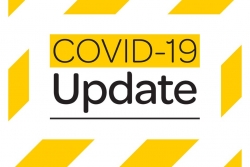新西兰的Covid-19交通信号灯系统已经结束。自9月13日起,公共场所不再需要佩戴口罩,医疗保健和老年护理环境(例如医院、药房和老年人居住设施)除外。
政府的疫苗授权也将于9月26日结束。
总理贾辛达·阿登证实,这些变化还包括:
- Covid-19检测呈阳性的人仍必须隔离七天,但如果家庭接触者每天都接受大鼠检测,则不再需要隔离。
- 对入境旅客的疫苗规定将被取消。
- 所有65岁以上的新西兰人和50岁以上的毛利人,如果他们的Covid-19检测呈阳性,将自动获得Covid-19抗病毒药物。
阿登说,在某些地方,人们可能仍会被要求佩戴口罩,但这将由每个地点自行决定,而不是政府的要求。疫苗接种要求也将由雇主自行决定。
她宣布已经购买了40,000个疗程的Covid-19抗病毒药物。这些将免费提供给年长的新西兰人。她说,抗病毒药物在感染病毒的早期阶段最有效。
阿登还承认,取消限制可能会引起残疾人和免疫功能低下者的担忧。
“我想向那些新西兰人保证,我们之所以做出这些改变,是因为风险较低,事实上,病例比今年早些时候低了10倍多,而且我们现在有了多层保护措施。
“我知道会有人对今天所做的变化感到担忧。我可以向你保证,如果我们不相信自己已经做好准备,我们就不会制造它们,” 她说。
“最新的健康建议现在告诉我们,新西兰的病例和住院人数是自2月份以来的最低水平,我们的人口接种了良好的疫苗,抗病毒药物的获得也有所扩大,因此新西兰有能力向前迈进。”




























































